#giantplanet
Video
instagram
#SolarSystemOfinstagram #JupiterOfinstagram #Jupiter #SolarSystem #BigPlanet #GroundPlanet #GiantPlanet #Planets #JupiterNet #PlanetsOfinstagram #JupiterReal . @nasa If you viewed Jupiter last month, you can expect the view to be even better this month! As the largest planet in our solar system, Jupiter will be at its brightest tonight when reaches opposition. Opposition occurs when a planet is near the point in its orbit where it is closest to the Earth, making it appear brighter than it does during any other time in its orbit. This means that Jupiter will be visible all night long, rising in the East around sunset and setting to the West around sunrise. . #JupiterSeria #SolarSystemSeria #BigPlanetsSeria #GiantPlanetsSeria #GraoundPlanetsSeria #PlanetsSeria #JupiterNetSeria #JupiterRealSeria . #10May2018seria #10MaySeria #2018MaySeria #2018ThursdaySeria #ThursdayMaySeria #ThursdaySeria (Planet Yupiter Nonton Dangdutan)
#graoundplanetsseria#thursdaymayseria#jupiter#solarsystem#planetsseria#jupiterrealseria#solarsystemofinstagram#jupiternetseria#jupiterofinstagram#giantplanetsseria#jupiterseria#jupiterreal#planetsofinstagram#10may2018seria#solarsystemseria#jupiternet#bigplanetsseria#giantplanet#groundplanet#2018thursdayseria#10mayseria#thursdayseria#planets#bigplanet#2018mayseria
1 note
·
View note
Text
Solar System: Related Terms with Definitions, Basics of Astronomy
Solar system is a gravitationally bound system that contain sun and other objects that orbit around sun, either directly or indirectly. The bodies orbiting around sun directly, include eight planets and there are moons that orbit indirectly. The solar system was formed 4.6 billion years ago by the gravitational collapse of a massive interstellar molecular cloud. The majority part of system ‘mass is possessed by sun, Jupiter. Inner planets: mercury, Venus, earth and mars are terrestrial planets that are made up of rock and metal. Outer planets are giant which are considerably massive than inner planets. All eight planets have almost circular orbits that lie within a nearly flat disc called the ecliptic.
Jupiter and Saturn
These are the gas giants that are made up of hydrogen and helium.
Uranus and Neptune
These are known as ice giants which are composed by the substances called volatiles like water, ammonia and methane. These volatiles have higher melting points than hydrogen and helium.
Planets
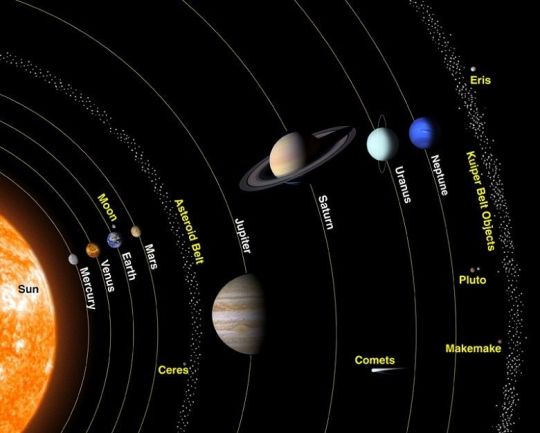
Planet is an astronomical object that is enough massive that it can get folded by its own gravity and is not massive that it can cause thermo-nuclear fusion. Planet rotates in its own axis (spinning) and revolves around sun too. It is in circular shape and has a core too.
A few properties of the planets in our solar system are given here.
Mercury: since it is near to sun so its surface temperature is 426.7 degree Celsius. However the opposite side to sun has temperature of 173 degree Celsius.
Venus: due to density of atmosphere, air pressure on its surface is 90 times more than that of earth, making it not suitable for life.
A planet of life, where we are living.
Mars: it has red color, it is made up of rock and experiences many wind storms.
Jupiter: it is largest of all planets.
Saturn: it contains many asteroids which cause rings surrounding it.
Uranus: its spinning axis is parallel to its orbit so seems to slide on axis.
Neptune: it is farthest planet.
Planets are categorized into 2 types.
Terrestrials: they are small with low density and rocky. They include Mercury, Venus, Earth, and Mars.
Giant: they are large in size and also known as gas giants including Jupiter, Saturn, Uranus, and Neptune.
Stars
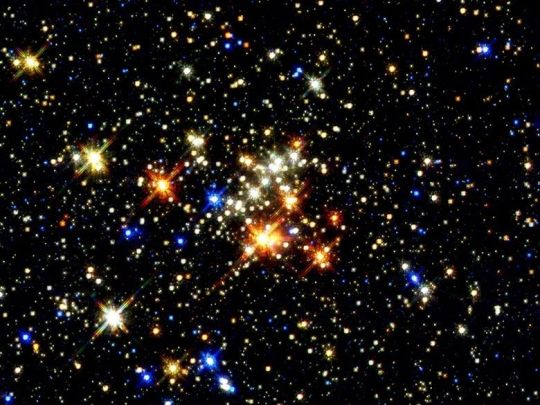
Star is a massive ball made of plasma that emits light throughout the space. Size, brightness, color, temperature and compositions are the points, on which properties of star can be determined.
Stars are formed within the dust clouds and are scattered in most galaxies. The Orion Nebula is a familiar example of such a dust cloud. Now the question arises that how they shine? So let’s understand it, well it is too interesting…
All stars, including sun are hot balloons of hot glowing plasma which is held together by its own gravity. Gravity of star is too intense and they are continuously crushing themselves inward. Now due to the gravitational friction, interior of star heats up. A star like sun has 5800 K temperature at its surface but temperature of core can be 15 million K.
Due to this high temperature in core, nuclear fusion takes place where hydrogen atoms gets fused into helium atoms. As a result, an enormous amount of energy gets released in form of gamma rays. Against the gravitational contraction, gamma rays push the star outward as they are trapped inside star. This is the reason why stars don’t contract. Now these gamma rays jump outside after being absorbed by an atom. It happens many times in a second and a single photon takes 100,000 years to reach the surface of star from its core. So as they reach on surface, they have lost some of their energy, becoming visible photons instead of gamma rays, from which it was started. After being emitted from star, they travel in straight line in space and they can travel forever if they don’t run into anything.
Moon

Moon is a body that is smaller than planets and revolves around planets. Moon is the natural satellite of our planet as earth has 1 moon, mars has 2 and Jupiter has 67 moons. It is the closest celestial body to earth. It is 239, 000 miles away from earth. It completes its one round around earth in 27.3 days. Since there is no atmosphere of moon so eve after years the dust present on surface of moon is in same position as before. Its size is ¼ of earth. Due to small mass and size, it has gravity that is 1/6 of earth’s gravity. That’s why you can jump on moon so high, because your body has only mass, it has no weight there. (W = mg) It is not a planet as it does not revolves around sun. It looks brighter in night because of the sun’s light reflected from it.
Satellite

Satellite is defined as an object which is launched into space to orbit or can be defined as it is a moon, machine or planet which orbits a planet or star. As earth revolves around sun so it is a satellite, similarly moon revolves around earth so it is also. Both of them are natural satellites. However many artificial satellites have also been sent into space that are revolving around earth. The functions of these satellites can be different, some of them are used to take pictures of that planet which helps meteorologists to predict about weather and to monitor the cloud patterns. Pictures of other planets, black hole, dark matter and sun help scientist to understand solar system in better way.
The path followed by a satellite is called orbit. Orbits can be at different altitudes and may have different rotation and orientation relative to earth. Satellites at higher altitudes of 36,000 Km facing same side of earth all the time are called geostationary satellites. Their speed is same as the rotation of earth so it seems to be stationary. This helps them to collect information over specific areas, continuously. Usually communication and weather satellites have this type of orbits.
Galaxy
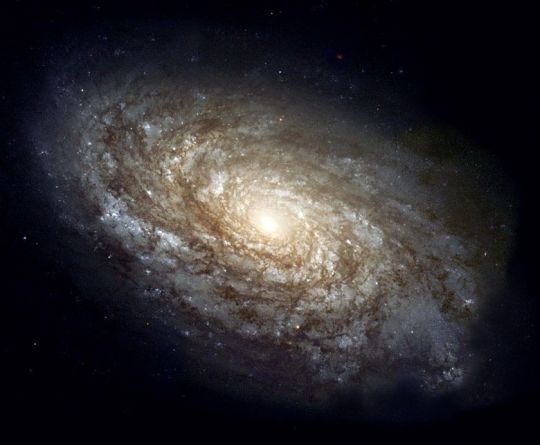
A galaxy is a huge collection of dust particles, gas and billions of stars and their solar systems. The thing that keeps galaxy bound, is its gravity. Our galaxy, Milky Way also has a super massive black hole in its core that causes gravity effect. In night, when you see stars on sky, then actually you see them in Milky Way. There are countless galaxies around us. You can get estimate of total number of galaxies by knowing that Hubble Space Telescope has seen 10,000 galaxies in a small patch of space in 12 days. Our galaxy is spiral shaped and it has curved arms which makes its look like pinwheel. Other galaxies are smooth and ovel shaped, called elliptical galaxies. Others are irregular shaped and look like blobs. Galaxies look bright, due to the brightness of the stars inside it.
Light year
Light year is the unit of distance and is defined as the distance travelled by light in one year. Since light travels at speed of 300,000 km/s, so in 1 year it can travel 10 trillion Km. So 1 light year = 9,500,000,000,000 Km.
Actually this unit is used for very very large distances, because we are not discussing about cities or countries, we are discussing planets and stars. We appear to define distances in our solar system in terms of an Astronomical Unit (AU). The AU is known as the Earth's mean distance from the Sun. It is about 150 million km (93 million miles) away. It may be said that Mercury is about 1/3 of an AU from the Earth, and that Pluto is about 40 AU from the Earth.
Asteroid belt
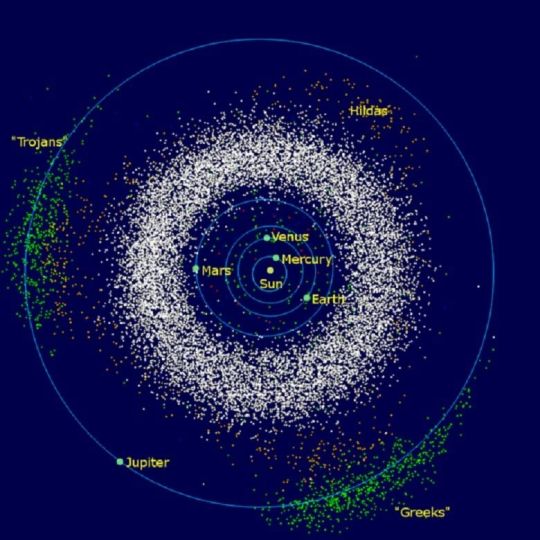
It lies between Mars and Jupiter. Asteroid belt is defined as a torus shaped (a surface that is generated by revolving a circle in 3D in the axis that is coplanar with circle) area in solar system which is located b/w the orbits of mars and Jupiter. This region contains solid and irregular shaped bodies that are smaller than planets, called asteroids.
Kuiper belt

Kuiper belt, also known as edgeworth- Kuiper belt, is a disc in outer solar system which is extended from the orbit of Neptune to 50 Au of sun. It is similar to asteroid belt but it is more wider, 20 times wider and 20 to 200 times massive. It also consists of small bodies like asteroid belt. Since many asteroids are composed of rock and metal, so most objects of Kuiper belt are made of large frozen volatiles (named as ices) including methane, ammonia and water.
Dwarf planets
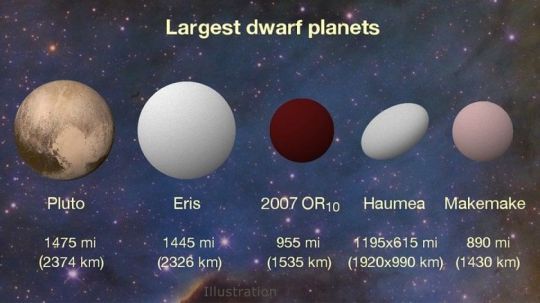
These are the massive objects that are not satellites and does not have any specific region in space, unlike other planets. It is in direct orbit of sun. They have sufficient mass for their self-gravity to overcome the forces of rigid bodies. Currently, five dwarf planets have been found. Ceres is located in the asteroid belt while remaining are present in or near to the Kuiper belt.
Solar wind

It is defined as a stream of charged particles that are released from the upper atmosphere of the sun, which is known as corona (it is the outer layer of sun, when it stretches far in space then its particles reach on the surface of earth). The stream with which solar wind is made up of, consists of electrons, protons and alpha particles having kinetic energy ranging from 0.5 to 10 KeV. Composition of solar wind also includes heavy ions and atomic nuclei like carbon, nitrogen, oxygen, neon, magnesium, silicon, sulphur and iron, in a little amount.
Comet
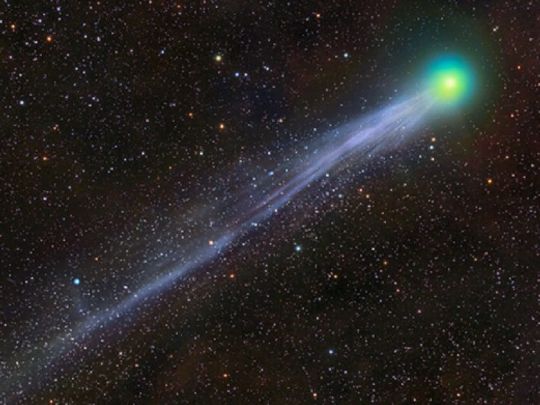
Comets are snowballs made of frozen gases, rock and dust and they orbit around sun. Initially its size is smaller, when it is in frozen state, but when it reaches near sun, it releases gas or dust due to the heat of sun. These emitted dust particles and gases made a tail that stretches away from sun for millions of miles. These icy bodies are also known as snowy dirtballs or dirty snowballs. They are composed of dust, ice, carbon dioxide, ammonia, methane and many more.
Nebula
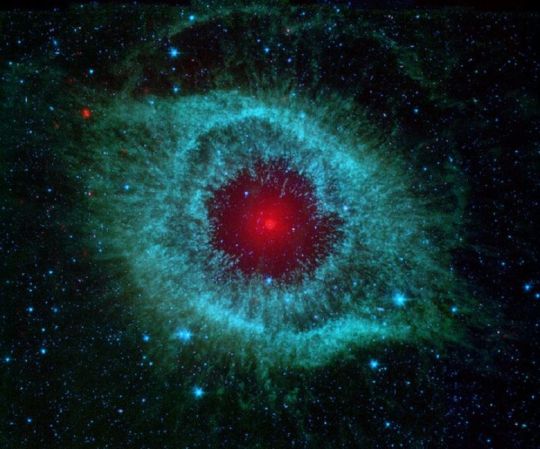
Nebula is a giant cloud of gas and dust present in space. Its plural is nebulae. Some nebula come from the dust and gas which is resulted by the explosion of a dying star. Nebula is also known as star nurseries as many stars are formed over here. They are found in the space b/w stars (interstellar space). The closest nebula to our earth is named as “Helix Nebula” which is approximately 700 light years away from us. Mean it will take 700 years to bring you there, if you can move with speed of light.
Supernova
A supernova is the largest ever observed eruption by humans. Each blast is a star's incredibly bright, super powerful blast. There are two types of supernova.
One of them is caused by the death of a massive star. Massive stars have huge amount of fuels in their core/center which causes tons of energy, that’s why center is too hot. This heat produces pressure and this pressure prevents star o collapse. There is 2 types of force inside a star, both are opposite. Star’s gravity tries to make it smaller by squeezing it, as much possible, but the nuclear fuel in core, creates too pressure that produces strong outward pressure.
When fuel ends in a massive star then it cools off due to which pressure also drops and gravity wins and star is dead.
Second type of supernova occurs when two stars orbit one another and one of them is earth sized dwarf.
Supernova event is so bright that they outshine entire galaxy for few days or even months and are visible across whole universe.
Black holes
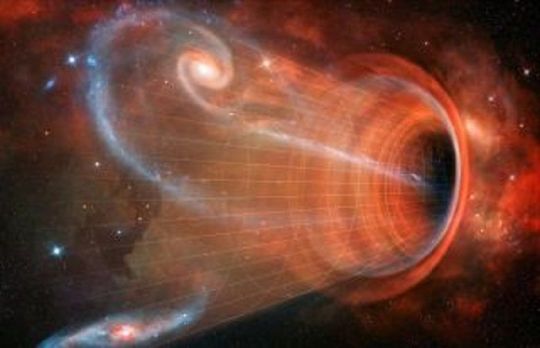
Black hole is defined as a place in space where grip of gravity is so strong that even light can’t come out of it. The reason of strong gravity is that matter has been squeezed into tiny space which happens during death of star. Black holes are invisible as no light can come out of them.
They can be of different sizes. Small black holes can be of the size of an atom, since these are very tiny but have mass (amount of matter in object) equivalent to large sized mountain.
Second type of black holes is termed as “stellar”. Their mass can be upto 20 times of sun or even more. Largest black hole is called supermassive with the mass of 1 million suns together. Research tells that our galaxy, Milky Way has a super massive black hole at its center named as Sagittarius A.
Black hole does not vender in space to eat stars and planets. Moreover, our earth will not fall into black hole, because there is no black hole near o our earth in solar system.
Dark matter
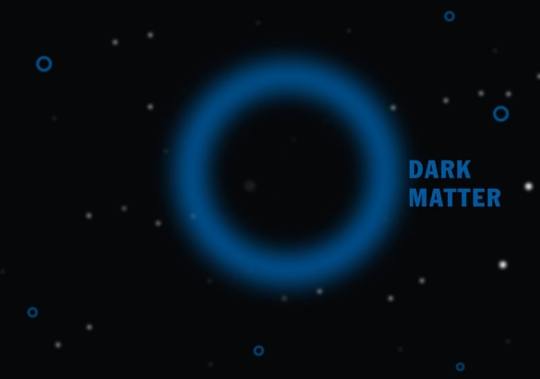
Dark matter is a substance with which 27 percent of universe is made up. It is invisible and it can’t emit, absorb or reflect any electromagnetic radiation like x rays and radio waves even light. It can interact with ordinary matter. This is fact due to which astronomers are able to make maps of its distribution even it is invisible.
Falling star or meteoroids
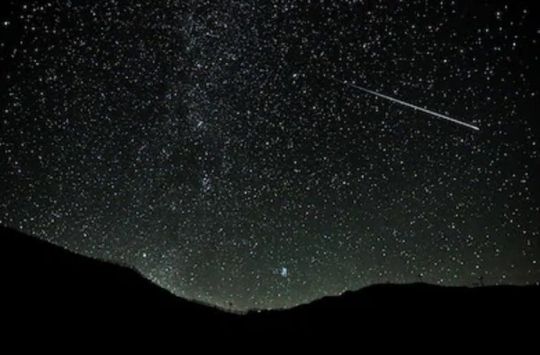
A body moving in solar system that changes its identity and becomes meteor when it enters earth’s atmosphere. When a meteoroid enters in earth’s atmosphere at speed of 20 km/s then streak of light is produced due to aerodynamic heating. This streak of light is seen for both the glowing object and tail of glowing particles that it leaves. This phenomenon is called meteor or shooting star. If many meteors appears after seconds or minutes and appear to get originated from same point in sky then it is called meteor shower. Now if the object bears ablation and falls or touches ground then it is called meteorite. Falling star is nothing to do with star, it is just a term used to identify the meteor on sky.
Do not forget leaving your valuable comment on this piece of writing and sharing with your near and dear ones. To keep yourself up-to-date with Information Palace, put your email in the space given below and Subscribe. Furthermore, if you yearn to know about Beta particle, view our construct, ‘Beta particle overview, beta decay, radioactivity of bananas.’
Read the full article
#Asteroid#Asteroidbelt#Blackhole#Comet#Darkmatter#Dwarfplanet#Earth#Galaxy#Giantplanet#Gravity#Jupiter#Kuiperbelt#Light#Lightyear#Mars#Matter#Mercury#Meteor#Meteorite#Meteoroid#Milkyway#Moon#Nebula#Neptune#Planets#Pluto#Satellite#Saturn#SolarSystem#Solarwind
0 notes
Photo

#Space: #AI shows how #hydrogen becomes a #metal inside #GiantPlanets — #MetallicHydrogen ► https://bit.ly/35yiYaj via @Cambridge_Uni https://bit.ly/2ZDLpjr
3 notes
·
View notes
Photo

#planet#solar system#rings#saturn#saturn rings#astronomy#space#uranus#jupiter#neptune#giantplanet#quiz#fun facts#facts#science#sciencefacts#trivia
0 notes
Photo

#damn #onemorething to #worry about #giantplanet #approaching #harlem #harlemnotsoha #newyorkcity (at Frederick Douglass Circle)
0 notes
Text
Science.
Observations about Giant planets.
#giantplanets #planets
http://gaxiesandspace.blogspot.com/2021/12/giant-planets-could-reach-maturity-much.html
0 notes
Text
The fate of giant planets depends on where they grow up


Astronomers normally concur that planets form out of the dirty particles disks that surround most newborn stars. When one of these so-called protoplanetary disks turns around a nascent star, globs of product clump together. Over the course of a couple of million years, these clumps (called planetesimals) grow bigger and bigger, forming a protoplanet that ultimately cleans out its orbital course within the disk. And when a protoplanet gets huge enough, gravity forces it into a round shape, lastly sealing its status as a real world. However, exactly what takes place after these planets kind is still a bit of a secret.
This is particularly real for giantplanets Although all of our planetary system’s most huge planets orbit reasonably far from the Sun, in other galaxy, huge exoplanets are discovered extremely, extremely near to their moms and dad stars. But why is this? Shouldn’ t all giant planets end up in comparable areas?
In a brand-new study just recently released in TheMonthly Notices of the Royal Astronomical Society, a group of scientists examined this enduring secret. Specifically, the group utilized simulations to study the numerous methods a recently formed giant world can move through its host system gradually.
Although the group confirmed that some planets travel inward towards their moms and dad stars after they kind (as previous research study has actually revealed), the group was amazed to discover that a substantial portion of growing giants can be dragged far from their host stars, resulting in the type of setup we see in our own planetary system today.
“There’s a lot about the early years of young planets that we don’t know,” stated Dimitris Stamatellos, an astronomer at the University of Central Lancashire (UCLan) and lead author of the brand-new research study, in apress release “There is a very fine balance between the forces that push the planet towards its parent star and the forces that push the planet away from it.”
youtube
.
.
This simulation traces the development of a young world as it forms within a protoplanetary disk. As it orbits, it sweeps up gas and dust from the protoplanetary disk, which develops magnificent spiral arms. In this case, interactions with the particles disk trigger the world to gradually move far from its moms and dad star. .
Dimitris Stamatellos
To perform the research study, Stamatellos and his group carried out innovative computer system simulations utilizing the UCLan High Performance Computing center and the UK DiRAC supercomputer center. With these effective tools, the scientists had the ability to design how growing, Jupiter- mass planets are affected by their initial cosmic houses: protoplanetary disks.
They discovered that giant planets that grow up in huge, unsteady protoplanetary disks have the tendency to be pressed outside, far from their moms and dad stars. Typically, these planets end up travelling out to ranges in between 10 and 40 times the range in between Jupiter and theSun This finding led the group to conclude that there are likely a lot more giant exoplanets orbiting far from their host stars than astronomers formerly believed. The issue is– as far as exoplanet detection goes– they are simply too darn faint to see, a minimum of in the meantime.
On the flipside, the scientists likewise discovered that giant planets that grow up in milder protoplanetary disks– those that are less huge and more steady– have the tendency to be dragged inward, towards their moms and dad stars. Though this appears to be the favored course, it isn’t really always the best. The group keeps in mind that some of the inward-migrating planets were ripped apart by extreme gravitational interactions with the protoplanetary disk and the host star.
“A planet’s survival is also difficult to predict. Many planets that formed initially may be destroyed, and only a few can survive to reach adulthood,” statedStamatellos “This newly discovered insight into the diversity of how young giant planets evolve can help us to understand more about the formation of solar systems beyond our own.”
Though lots of concerns still stay relating to the development and migratory routines of young giant planets, astronomers hope the just recently released TESS telescope– which will look for exoplanets around almost 200,000 stars within 300 light-years of Earth– will assist address them.
( function( d, s, id) var js, fjs = d.getElementsByTagName( s)[0];. if (d.getElementById( id)) return;. js = d.createElement( s); js.id = id;. js.src = "http://connect.facebook.net/en_US/sdk.js#xfbml=1&version=v2.4";. fjs.parentNode.insertBefore( js, fjs);. (file, 'script', 'facebook-jssdk'));.
New post published on: https://livescience.tech/2018/07/12/the-fate-of-giant-planets-depends-on-where-they-grow-up/
0 notes
Photo

NASA just released this image of Jupiter's southern hemisphere as captured by the Juno spacecraft while it performed a close flyby of the giant planet on December 16, 2017. Juno also accomplished a close flyby over Jupiter's churning atmosphere on February 7, 2018 successfully completing its tenth science orbit. At the time of perijove (the point in Juno's orbit when it is closest to the planet's center), the spacecraft will be about 2,100 miles (3,500 kilometers) above the planet's cloud tops. Picture from NASA/AFP/Getty #FT #financialtimes #space #jupiter #planets #planet #gas #giant #giantplanet #outerspace #science #nasa #juno #spacecraft #photo #explore #exploration #outerspace #sky #planetary http://ift.tt/2EQiMUG
0 notes
Video
(vía https://www.youtube.com/watch?v=DQU3gfKzY00)
Great Cold Spot of Jupiter: it is in a very high area of the largest planet in the solar system.
Scientists have found another large spot on Jupiter is cold and is in a very high area of ??the largest planet in our solar system. The dark zone has a length of 24,000 kilometers 15,000 miles and a width of 12,000 kilometers 7,500 miles...
#Scientists #Jupiter #zone #SolarSystem #AbanTech #technology #atmosphere #GreatColdSpot #GreatRedSpot #GiantPlanet
#MeteorologicalSystem #telescope #temperature
0 notes
Photo

#Space: #GiantPlanets and #BrownDwarfs likely form in different ways. Once thought to be part of the same population, planets larger than Jupiter and “#FailedStars” likely grow via different mechanisms, ► https://ift.tt/2LgRdtM via @AGU_Eos
1 note
·
View note
Photo

#Space: #GiantPlanets and #comets battle in planet-forming disk ► http://bit.ly/2QvVCbP via @earthskyscience
0 notes
